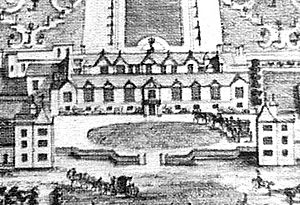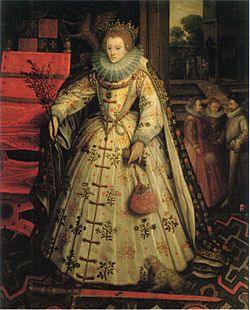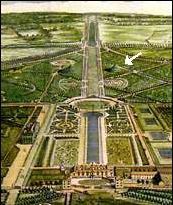Wanstead Hall facts for kids
Wanstead Hall was a large country house, also known as a manor house, located in Wanstead. This area is now part of the London Borough of Redbridge, but long ago it was in the county of Essex. The original Wanstead Hall was later taken down to make room for a much grander building called Wanstead House.
History of Wanstead Hall
The Tudor Years
Wanstead Hall was likely a small building for a long time. But by 1499, it had grown quite large. It became a favorite hunting lodge for King Henry VII. He enjoyed its privacy, especially towards the end of his reign.
Henry VII spent a lot of money on the hall and its park. He liked the quiet park, which gave him much-needed alone time. The King even used Wanstead to secretly collect money from special taxes and fines. This kept these dealings away from important nobles at his main palaces.
Young Henry VIII also lived at Wanstead for a while with his father. Both kings loved to hunt within the manor's grounds. During Henry VIII's rule (1509–1547), Wanstead Park was fenced off, or "enclosed". This happened just before 1512 and probably meant some wooded areas were cleared. Around this time, nearby Aldersbrook became its own separate manor.
Wanstead stayed a Royal manor for many years. The job of "keeper" was given to royal friends. Hugh Denys, who helped Henry VII with money, was keeper until 1511. After he died, Charles Brandon became keeper. He later married Henry VIII's sister, Mary Tudor.
Sir John Heron, another royal money officer, was keeper until 1521. He owned land in Aldersbrook too. People say he brought heron birds to the area as a fun way to mark his presence. One of the lakes was even called "Herony Lake."
In 1543, Lord Richard Rich, a very important government official, became keeper. Then, in 1549, King Edward VI gave him full ownership of the manor and park. In 1577, Rich's son sold Wanstead to Robert Dudley, 1st Earl of Leicester. Dudley also bought the nearby manor of Stonhall. From then on, Wanstead and Stonehall were owned together by the same people.
Jacobean Wanstead
King James I visited Wanstead in September 1614. He even met with the Venetian ambassador there. By 1619, Sir Henry Mildmay owned the hall. But he lost it to the Crown after the English Civil War. Mildmay had fought against the King in that war.
King Charles II then gave the estate to his brother, James, Duke of York. However, around 1662, it was returned to Sir Robert Brooke, who was Mildmay's son-in-law.
In 1673-1674, Josiah Child bought the manor. He was a very important leader of the East India Company. He spent a lot of time and money making the estate grand and fashionable. In 1678, he was given the special title of 1st Baronet Child of Wanstead.
When John Evelyn, a famous diarist, visited Wanstead in March 1683, he wrote about it. He mentioned Sir Josiah Child's "prodigious cost" (huge expense) in planting walnut trees. He also noted the many fish ponds that stretched for miles into Epping Forest. These ponds still exist today, though they have changed a bit. They form a chain, flowing from Shoulder of Mutton Pond down to Heronry Pond, Perch Pond, the Dell, and into the Ornamental Waters.
Josiah Child died in 1699. His son, also named Sir Josiah Child, took over. This son leased Wanstead and Stonehall to his half-brother, Richard Child. When Sir Josiah II died in 1704, Richard Child became the 3rd Baronet. Eleven years later, Richard Child decided to build a completely new and grander house in place of the old hall. This new building was called Wanstead House.




